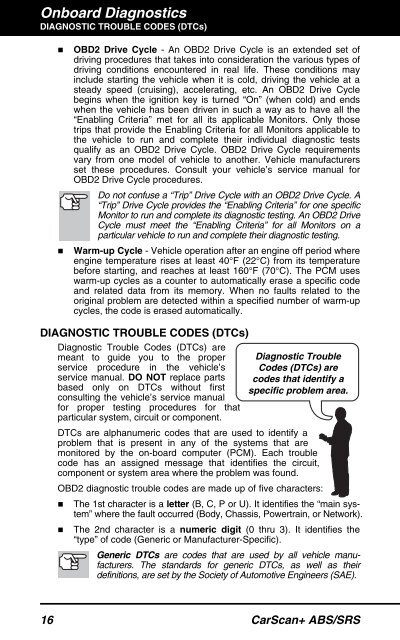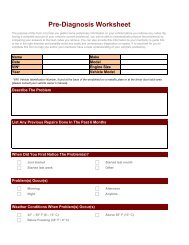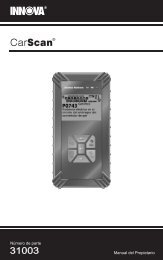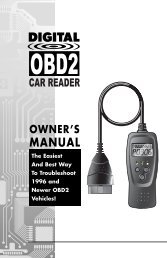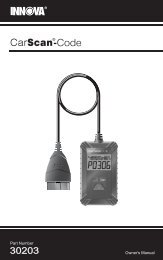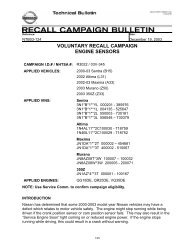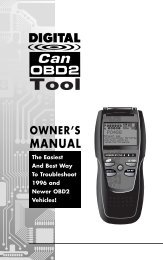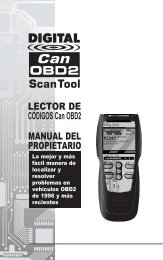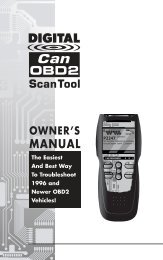31603 - Innova Pro
31603 - Innova Pro
31603 - Innova Pro
Create successful ePaper yourself
Turn your PDF publications into a flip-book with our unique Google optimized e-Paper software.
Onboard DiagnosticsDIAGNOSTIC TROUBLE CODES (DTCs)• OBD2 Drive Cycle - An OBD2 Drive Cycle is an extended set ofdriving procedures that takes into consideration the various types ofdriving conditions encountered in real life. These conditions mayinclude starting the vehicle when it is cold, driving the vehicle at asteady speed (cruising), accelerating, etc. An OBD2 Drive Cyclebegins when the ignition key is turned “On” (when cold) and endswhen the vehicle has been driven in such a way as to have all the“Enabling Criteria” met for all its applicable Monitors. Only thosetrips that provide the Enabling Criteria for all Monitors applicable tothe vehicle to run and complete their individual diagnostic testsqualify as an OBD2 Drive Cycle. OBD2 Drive Cycle requirementsvary from one model of vehicle to another. Vehicle manufacturersset these procedures. Consult your vehicle’s service manual forOBD2 Drive Cycle procedures.Do not confuse a “Trip” Drive Cycle with an OBD2 Drive Cycle. A“Trip” Drive Cycle provides the “Enabling Criteria” for one specificMonitor to run and complete its diagnostic testing. An OBD2 DriveCycle must meet the “Enabling Criteria” for all Monitors on aparticular vehicle to run and complete their diagnostic testing.• Warm-up Cycle - Vehicle operation after an engine off period whereengine temperature rises at least 40°F (22°C) from its temperaturebefore starting, and reaches at least 160°F (70°C). The PCM useswarm-up cycles as a counter to automatically erase a specific codeand related data from its memory. When no faults related to theoriginal problem are detected within a specified number of warm-upcycles, the code is erased automatically.DIAGNOSTIC TROUBLE CODES (DTCs)Diagnostic Trouble Codes (DTCs) aremeant to guide you to the properservice procedure in the vehicle’sservice manual. DO NOT replace partsbased only on DTCs without firstconsulting the vehicle’s service manualfor proper testing procedures for thatparticular system, circuit or component.Diagnostic TroubleCodes (DTCs) arecodes that identify aspecific problem area.DTCs are alphanumeric codes that are used to identify aproblem that is present in any of the systems that aremonitored by the on-board computer (PCM). Each troublecode has an assigned message that identifies the circuit,component or system area where the problem was found.OBD2 diagnostic trouble codes are made up of five characters:• The 1st character is a letter (B, C, P or U). It identifies the “main system”where the fault occurred (Body, Chassis, Powertrain, or Network).• The 2nd character is a numeric digit (0 thru 3). It identifies the“type” of code (Generic or Manufacturer-Specific).Generic DTCs are codes that are used by all vehicle manufacturers.The standards for generic DTCs, as well as theirdefinitions, are set by the Society of Automotive Engineers (SAE).16 CarScan+ ABS/SRS


